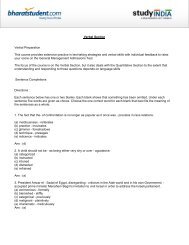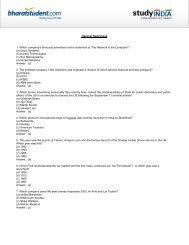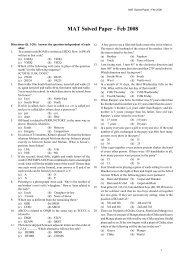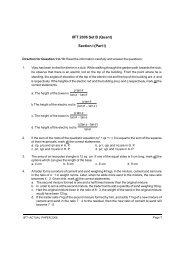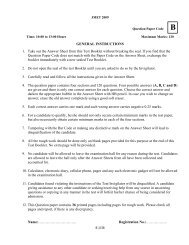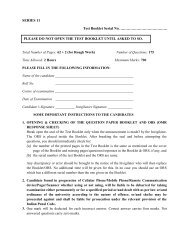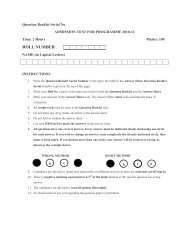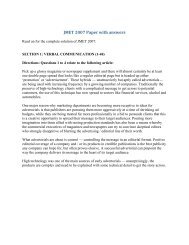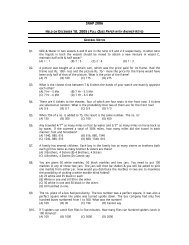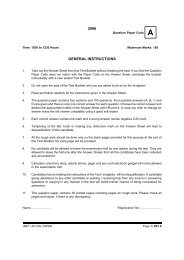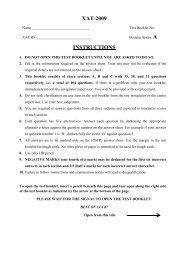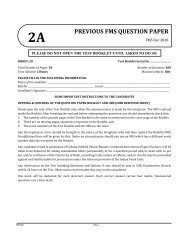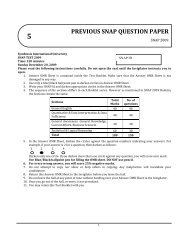ADMISSION TEST FOR PROGRAMME 2008-10
ADMISSION TEST FOR PROGRAMME 2008-10
ADMISSION TEST FOR PROGRAMME 2008-10
Create successful ePaper yourself
Turn your PDF publications into a flip-book with our unique Google optimized e-Paper software.
Viewed in retrospect, one might understand the opposition of biological research<br />
scientists to Salk's methods. He made many transgressions against traditional research.<br />
For one thing, the very efficacy of his vaccine toppled one of the most universally<br />
accepted (though erroneous) tenets of orthodox virology - the notion that an active virus<br />
could not be checked by its own dead viral bodies. That was precisely the path Salk chose<br />
to develop his vaccine. For decades, traditional biologists had been waging what they<br />
considered a deliberate, correct, gentleman's fight against polio with efforts focused on<br />
treatment rather than prevention. By contrast, Salk fought the dragon like a man<br />
possessed, seeking a final cure. He had grown up on the fringes of poverty and developed<br />
an attitude more humanist than scientific, a man unwilling to abide senseless rules in the<br />
face of a crisis. He flailed against the disease like a punch-drunk street fighter-and he<br />
landed a knockout blow. Finally, his success proved the greatest transgression of all<br />
against his fellow scientists. By the 1950s, researching polio was a very big business, and<br />
overnight, Salk made further efforts redundant. It was unheard of that an outsider,<br />
working independently; could accomplish what the nation's top scientists with their great<br />
laboratories and countless millions of dollars could not. They expressed their bitterness in<br />
rather petty ways, even refusing to accept Salk into the National Academy of Science.<br />
The reason? Salk, they contended, was not really a scientist - only a technician.<br />
The public never knew the depths of his colleagues' resentment. It was almost a<br />
decade after his discovery before Salk himself would even discuss it. “The worst tragedy<br />
that could have befallen me was my success,” he told an interviewer. “I knew right away<br />
that I was through, that I would be cast out.”<br />
But he was not through. With the polio dragon defeated, he launched a campaign<br />
to raise funds to construct the Salk Institute for Biological Studies at Torrey Pines,<br />
California. He worked there, surrounded by bright, young scientists until his death at age<br />
eighty. Salk later became obsessed with finding a cure for the human immunodeficiency<br />
virus (HIV) that causes AIDS. Almost until the day he died, he was trying to catch<br />
lightning in a test tube one last time. Perhaps a man is allotted only one miracle in his<br />
lifetime. Today, research scientists work in the laboratories Jonas Salk built, searching<br />
for new weapons in the fight against dragons that defy destruction: cancer, AIDS,<br />
Alzheimer's, cerebral palsy, multiple sclerosis, and Parkinson's. Among those scientists at<br />
Torrey Pines, waging gentlemanly wars against the microscopic enemies of man, perhaps<br />
a new maverick will emerge - a stubborn street fighter who will defeat the odds and<br />
capture the lightning that eluded Jonas Salk.<br />
38



